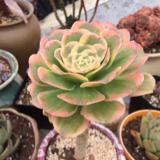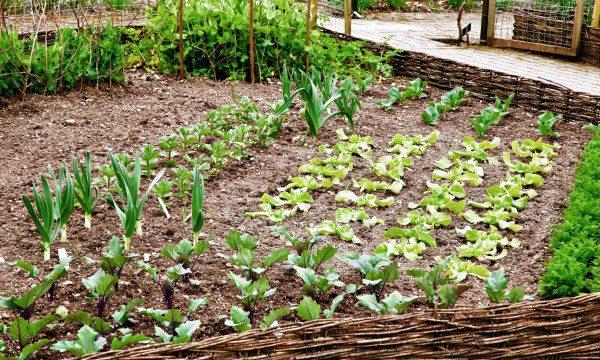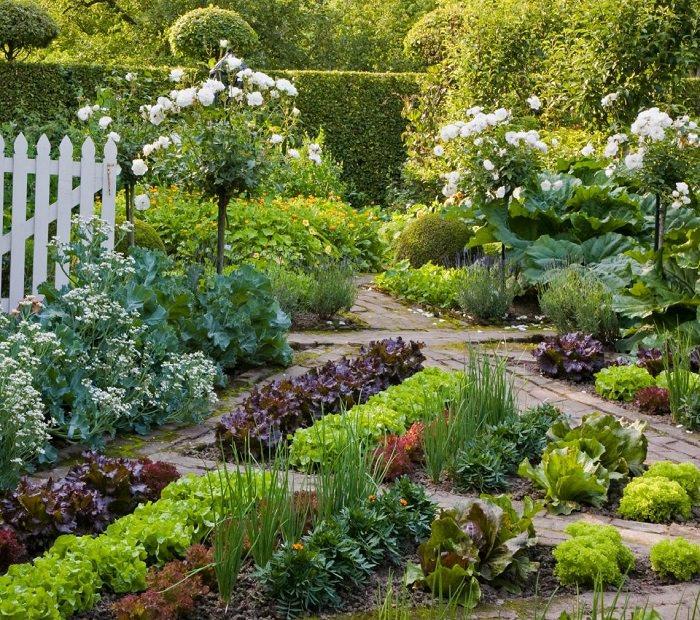文章
Martha
2017年05月22日

Growing Beets in Containers is easy. This quick growing vegetable doesn’t require much care and perfect for beginner container gardeners.

Beets are one of the fast growing vegetables and if you’ve grown other root vegetables like radishes or carrots, then growing beets in containers is not much different.
Choosing a pot
Use any type of container you find best with SUFFICIENT drainage holes. However, clay pots are an excellent choice. Growing beets is possible in small pots but ensure they are minimum 8 inches deep. 10 to 12 inches deep pots are IDEAL as they will encourage roots to develop! You can choose as much wide container as you want. The wider it would be the more plants you can grow together. Window boxes or large rectangular containers with the recommended depth are good choices.
When to begin planting
As a best practice, you can start planting beets in the spring, three-two weeks before the last (average) frost date in your area. You can continue to sow seeds every 3 to 4 weeks until when the temperature start to reach above 80 F (27 C). Again, you can begin planting in the late summer and early fall (autumn) when the temperature starts to come under the range of 85 F (29 C).
For warm tropical climate
As beets is a cool weather crop, those who live in warm subtropical or tropical areas (USDA Zones 9b-11) should grow it in late fall, winter and early spring.
Planting Beets in Pots

First thing first– Beets don’t like to be transplanted, so no role of seed trays! Pick desired pots and sow seeds 1/4 inch deep. Once they germinate and reach the significant height, you can select the healthiest seedlings and thin others apart to maintain the recommended 3 inches distance spacing. To speed up the germination, you can also soak the seeds overnight in nonchlorinated water before planting. However, if seeds are treated with fungicide, avoid this.
The seedlings will emerge anytime between 5 to 15 days, depending on the growing conditions. Until then keep the pots in a spot that is warm and receive mild sun and maintain the moisture in the soil. Once germinated, place the baby plants in the desired position and later when seedlings grow up to 3 inches tall, thin them. To maintain the spacing recommendation mentioned below.
Varieties
If you know how to grow beets in containers, you can try any variety. A few of them we’ve listed here are the Detroit Dark Red, Early Wonder, Sangria, and Sweetheart.
Requirements for Growing Beets in Containers

Position
Beets can be grown in full sun to part shade but for optimum growth choose a spot that receives full sun, at least 6 hours of sunlight is necessary. Also, make sure the spot you place your containers have good air circulation.
Soil
Soil that is loamy, penetrable and promotes the development of large roots is best for growing beet in a pot. Make sure your soil is rich in nutrients, you can also add a lot of compost. Also, avoid adding pebbles or stones in the soil or the bottom layer when growing this root vegetable.
If you’re not using commercial soil packet for growing beets, prepare your own potting mix by adding 1 part soil, 1 part compost or well-rotted manure, and 1 part perlite. If you want to make a soilless mix, add 1 part peat moss or coco peat, 1 part compost or well-rotted manure, and 1 part perlite, vermiculite or sand. You can also add time-based fertilizer that is low in nitrogen at the time of mixing the soil.Watering
If you don’t want hard and sinewy beetroots, water regularly and evenly. To keep the soil slightly moist all the time. Ensure you not let the soil dry out completely between the growing process and also avoid OVERWATERING.
Spacing
Maintain the 3 inches of distance between each plant from all direction for growing beets in pots successfully. You can grow each plant 2 inches apart, but this will hamper the growth of roots. For reference, the 12 inches wide rectangular pot can support around 4-5 plants.
Temperature
Keep in mind, the optimum temperature for growing beets in containers require a temperature around 50 F – 85 F (10 C – 29 C), but it can be grown in temperature as low as 40 F (4.5 C) and as high as 90 F (32 C) with difficulty.
Beet Care

Fertilizer
It’s a good idea to use time-based (slow release) fertilizer to add into the potting soil. As beets is a root vegetable and you may like to increase its root development, use a fertilizer that is low in nitrogen but high in phosphorous and potassium. For example, a formula of NPK 5-10-10.
Once the beetroots growing in pots become one month and doing well, you can switch to a water-soluble fertilizer. With the same 5-10-10 formula. And if you see Nitrogen deficiency in soil, use the complete fertilizer with NPK in 20-20-20 ratio.
If you want to grow beets organically, side dress plants with compost or manure and feed the plants with compost tea every other week. As beets usually suffer from boron deficiency, you can add seaweed (an excellent source of boron) fertilizer in compost tea for optimum growth.Pests and Diseases
When growing beets in pots, you don’t have to worry about pests and diseases much. You can avoid most of the problems by not overwatering and avoiding overhead watering. The common culprits are root rot and scab. Leaf miners and common pests like aphids can affect the foliage growth.
Harvesting
Beets on average require anywhere from 6-8 weeks to get ready for harvest after germination. You can also harvest beet green to use in salads; the tender leaves taste delicious. You can start harvesting greens when leaves are a few inches long by cutting the outer leaves only and leaving the small inner foliage to grow, which you can harvest later.

Beets are one of the fast growing vegetables and if you’ve grown other root vegetables like radishes or carrots, then growing beets in containers is not much different.
Choosing a pot
Use any type of container you find best with SUFFICIENT drainage holes. However, clay pots are an excellent choice. Growing beets is possible in small pots but ensure they are minimum 8 inches deep. 10 to 12 inches deep pots are IDEAL as they will encourage roots to develop! You can choose as much wide container as you want. The wider it would be the more plants you can grow together. Window boxes or large rectangular containers with the recommended depth are good choices.
When to begin planting
As a best practice, you can start planting beets in the spring, three-two weeks before the last (average) frost date in your area. You can continue to sow seeds every 3 to 4 weeks until when the temperature start to reach above 80 F (27 C). Again, you can begin planting in the late summer and early fall (autumn) when the temperature starts to come under the range of 85 F (29 C).
For warm tropical climate
As beets is a cool weather crop, those who live in warm subtropical or tropical areas (USDA Zones 9b-11) should grow it in late fall, winter and early spring.
Planting Beets in Pots

First thing first– Beets don’t like to be transplanted, so no role of seed trays! Pick desired pots and sow seeds 1/4 inch deep. Once they germinate and reach the significant height, you can select the healthiest seedlings and thin others apart to maintain the recommended 3 inches distance spacing. To speed up the germination, you can also soak the seeds overnight in nonchlorinated water before planting. However, if seeds are treated with fungicide, avoid this.
The seedlings will emerge anytime between 5 to 15 days, depending on the growing conditions. Until then keep the pots in a spot that is warm and receive mild sun and maintain the moisture in the soil. Once germinated, place the baby plants in the desired position and later when seedlings grow up to 3 inches tall, thin them. To maintain the spacing recommendation mentioned below.
Varieties
If you know how to grow beets in containers, you can try any variety. A few of them we’ve listed here are the Detroit Dark Red, Early Wonder, Sangria, and Sweetheart.
Requirements for Growing Beets in Containers

Position
Beets can be grown in full sun to part shade but for optimum growth choose a spot that receives full sun, at least 6 hours of sunlight is necessary. Also, make sure the spot you place your containers have good air circulation.
Soil
Soil that is loamy, penetrable and promotes the development of large roots is best for growing beet in a pot. Make sure your soil is rich in nutrients, you can also add a lot of compost. Also, avoid adding pebbles or stones in the soil or the bottom layer when growing this root vegetable.
If you’re not using commercial soil packet for growing beets, prepare your own potting mix by adding 1 part soil, 1 part compost or well-rotted manure, and 1 part perlite. If you want to make a soilless mix, add 1 part peat moss or coco peat, 1 part compost or well-rotted manure, and 1 part perlite, vermiculite or sand. You can also add time-based fertilizer that is low in nitrogen at the time of mixing the soil.Watering
If you don’t want hard and sinewy beetroots, water regularly and evenly. To keep the soil slightly moist all the time. Ensure you not let the soil dry out completely between the growing process and also avoid OVERWATERING.
Spacing
Maintain the 3 inches of distance between each plant from all direction for growing beets in pots successfully. You can grow each plant 2 inches apart, but this will hamper the growth of roots. For reference, the 12 inches wide rectangular pot can support around 4-5 plants.
Temperature
Keep in mind, the optimum temperature for growing beets in containers require a temperature around 50 F – 85 F (10 C – 29 C), but it can be grown in temperature as low as 40 F (4.5 C) and as high as 90 F (32 C) with difficulty.
Beet Care

Fertilizer
It’s a good idea to use time-based (slow release) fertilizer to add into the potting soil. As beets is a root vegetable and you may like to increase its root development, use a fertilizer that is low in nitrogen but high in phosphorous and potassium. For example, a formula of NPK 5-10-10.
Once the beetroots growing in pots become one month and doing well, you can switch to a water-soluble fertilizer. With the same 5-10-10 formula. And if you see Nitrogen deficiency in soil, use the complete fertilizer with NPK in 20-20-20 ratio.
If you want to grow beets organically, side dress plants with compost or manure and feed the plants with compost tea every other week. As beets usually suffer from boron deficiency, you can add seaweed (an excellent source of boron) fertilizer in compost tea for optimum growth.Pests and Diseases
When growing beets in pots, you don’t have to worry about pests and diseases much. You can avoid most of the problems by not overwatering and avoiding overhead watering. The common culprits are root rot and scab. Leaf miners and common pests like aphids can affect the foliage growth.
Harvesting
Beets on average require anywhere from 6-8 weeks to get ready for harvest after germination. You can also harvest beet green to use in salads; the tender leaves taste delicious. You can start harvesting greens when leaves are a few inches long by cutting the outer leaves only and leaving the small inner foliage to grow, which you can harvest later.
2
0
文章
Andrea
2017年02月17日

If you want a great #vegetable #garden you need to use raised garden beds. Raised beds are great for growing healthy, productive vegetables and flowers and they’re easy to make.
Making a raised bed is a simple bit of carpentry that anyone should be able to do. The easiest way to buy some 2×12 lumber and screw them together in the shape of a rectangle. You can make them as long as you like but you should limit the width to 3 or 4 feet so you can easily reach in the bed to plant seeds, pull weeds or to harvest crops.
The next question you’re probably asking is what kind of wood do I use to build raised beds. The whole pressure treated vs. non issue is a complicated one. Does pressure treated wood leach chemicals into the soil? Well the answers are yes and maybe.

The old pressure treated lumber (CCA) is preserved with a process that uses arsenic. Obviously you don’t want arsenic anywhere near something you’re going to eat even in the small amounts that might be present in a raised bed vegetable garden. CCA wood isn’t too readily available anymore so you probably don’t have to worry about coming across it. The new improved pressure treated wood (ACQ) replace CCA pressure treated wood a few years ago. The lumber industry says it safer to handle and use but guess what? It eats through normal galvanized screws and fasteners. You have to use stainless steel screws with ACQ wood. I’m not an expert with lumber or chemicals but that sounds like something that shouldn’t be near my vegetables.
I think I’ll avoid all pressure treated wood until some long term studies are done.
Naturally rot resistant woods like cedar and redwood are great for building raised beds. But cedar and redwood are expensive. You could also use regular non-pressure treated lumber but just be aware that the wood will probably rot in a few years. It’s inexpensive enough that it shouldn’t be an issue.
If you plan on growing vegetables or flowers in your yard this year, why not try growing them in raised garden beds.
Making a raised bed is a simple bit of carpentry that anyone should be able to do. The easiest way to buy some 2×12 lumber and screw them together in the shape of a rectangle. You can make them as long as you like but you should limit the width to 3 or 4 feet so you can easily reach in the bed to plant seeds, pull weeds or to harvest crops.
The next question you’re probably asking is what kind of wood do I use to build raised beds. The whole pressure treated vs. non issue is a complicated one. Does pressure treated wood leach chemicals into the soil? Well the answers are yes and maybe.

The old pressure treated lumber (CCA) is preserved with a process that uses arsenic. Obviously you don’t want arsenic anywhere near something you’re going to eat even in the small amounts that might be present in a raised bed vegetable garden. CCA wood isn’t too readily available anymore so you probably don’t have to worry about coming across it. The new improved pressure treated wood (ACQ) replace CCA pressure treated wood a few years ago. The lumber industry says it safer to handle and use but guess what? It eats through normal galvanized screws and fasteners. You have to use stainless steel screws with ACQ wood. I’m not an expert with lumber or chemicals but that sounds like something that shouldn’t be near my vegetables.
I think I’ll avoid all pressure treated wood until some long term studies are done.
Naturally rot resistant woods like cedar and redwood are great for building raised beds. But cedar and redwood are expensive. You could also use regular non-pressure treated lumber but just be aware that the wood will probably rot in a few years. It’s inexpensive enough that it shouldn’t be an issue.
If you plan on growing vegetables or flowers in your yard this year, why not try growing them in raised garden beds.
0
0
文章
lenny
2017年02月16日


Herbs are for more than just making your food extra wonderful or supporting your health and vitality through tea blend infusions. Planted in strategic places in your vegetable garden, herbs repel certain kinds of insects without the use of harmful chemicals.
Try planting these herbs and flowers in your garden as preventative measures. If you get a really bad infestation, go to chemicals, but these plants can help prevent problems.
Here are a few bugs, and expert recommendations on herbs to plant for prevention.
Ants: Pennyroyal, spearmint, southernwood, tansy
Aphids: Garlic, chives and other onions, coriander, anise, nasturtium and petunia around fruit trees
Borer: garlic, onion, tansy
Cabbage moth: mint, hyssop, rosemary, southernwood, thyme, sage, celery, catnip, nasturtium
Colorado potato beetle: green beans, horseradish, dead nettle, flax, catnip, coriander, tansy, nasturtium
Cucumber beetle: tansy, radish
Cutworm: tansy
Flea beetle: wormwood, mint, catnip, interplant crops with tomato
Japanese beetle: garlic, larkspur, tansy, rue, white geranium
Leafhopper: petunia, geranium
Mexican bean beetle: marigold, potato, rosemary, savory, petunia
Mites: garlic, onion, chives
Nematodes: marigold, salvia, dahlia, calendula, asparagus
Rose chafer: geranium, petunia, onion
Slug: rosemary, wormwood
Squash bug: tansy, nasturtium, catnip
Tomato hornworm: borage, marigold, opal basil
Whitefly: nasturtium, marigold

Petunias, marigolds and geraniums can be planted in a border around the garden or trees. If you want the benefit of catnip without digging it out of your garden for years to come, put in a large clay pot and place nearby. For other pest prevention plants, thoughtful inter-planting of vegetables can help with the process.
Using herbs and flowers in this way can keep your garden “green” and prevent tears when you find your prized tomato plant cut off at the root by some nasty slug!
This article was brought to you by the friendly Tea, Herb and Spice folks at the 10000Seeds website. Show your appreciation for this newfound knowledge by browsing the unique collections of dried herbs and spices available to enhance and expand your cooking adventures. We especially recommend the Sweet Herb and Spice Adventure for an enticing change of pace!
0
0
文章
Eyin Thor
2017年02月16日

If you want to have a successful and most productive VEGETABLE garden, do crop rotation. Learn everything you need to know about it in this informative guide!

What is crop rotation? Crop rotation is the practice of dedicating a single spot in the garden or patch of land to only one type or family of vegetable or crop for a certain time period. Specifically, members of one plant family must never be planted in that same spot or area more than once in a period of four years.
Do you know crop rotation boosts the yield, prevent soil-borne diseases and weeds, and improves soil condition?
This is done for two reasons. First, this helps prevent the spread of soil-borne diseases and pests; second, doing so allows soil nutrients to be replenished and used properly. Read on to know more about the crop rotation benefits.
If you want to read more about the crop rotation benefits, head over to this educational website!
1. Disease Prevention

Garden insects and pests have a tendency of feeding on plants that are related to each other. For example, let’s say cabbage-eating insects have laid their eggs on the soil before death. If cabbage or another vegetable from the same family will be planted in that exact spot, those eggs will hatch and start feeding on the new plants, thus continuing the cycle. The same applies to soil-borne diseases like bacteria and fungi, and so by planting a different type of plant, you prevent pests and disease from re-emerging in the garden.
2. Prevent Soil Nutrient Depletion

Crop rotation can also help in preventing the depletion of soil nutrients. Crops grow when they absorb sufficient amounts of the following nutrients: phosphorus, potassium, and nitrogen. If plants from the same family are grown on the same patch of soil, expect more of those nutrients to be absorbed. As long as the same plants are raised on that section of the garden, those same nutrients will be absorbed, and eventually, they will be depleted.
For this reason, it’s usually recommended that soil-builders (like beans) and light feeders (like onions) are planted once those heavy nutrient absorbers are harvested. Below are details of different plant families and what crops to plant after them.The Major Plant Families and When These Should Be PlantedOnion Family – Light feeders, must be planted after the soil enrichers or heavy absorbersCabbage Family – Heavy absorbers, should be planted after legumes. Once these have been harvested, you have three options: let the planting area be fallow for one season, plant a cover crop next, or add compost to your garden.Lettuce Family –Like the above, they are heavy nitrogen feeders. These must be followed with legumes.Beet Family – They also require lots of nutrients. Legumes must follow any member of this plant family.Grass Family – Follow these plants with any tomato family member.Bean Family –These are soil-building crops. You can plant these before or after planting any member of the other plant families.Tomato Family – Considered heavy feeders. Must be planted after grass family members. Legumes must follow these plants.Squash Family –Heavy absorbers of nutrients. These must be planted after grass family members and should be followed with legumes.Carrot Family –Light to Medium Absorbers. Plants in this category can follow members of any other plant group. You can let your garden sit for one season or you can follow these with onions or legumes.
With a few patches of soil, a highly reliable water tank for rainwater storage, and the above plan, you can start growing vegetables in your own home SUCCESSFULLY.
This is not just a money-saving endeavor, this is also a great way to help save the planet. Start your own vegetable garden now!

What is crop rotation? Crop rotation is the practice of dedicating a single spot in the garden or patch of land to only one type or family of vegetable or crop for a certain time period. Specifically, members of one plant family must never be planted in that same spot or area more than once in a period of four years.
Do you know crop rotation boosts the yield, prevent soil-borne diseases and weeds, and improves soil condition?
This is done for two reasons. First, this helps prevent the spread of soil-borne diseases and pests; second, doing so allows soil nutrients to be replenished and used properly. Read on to know more about the crop rotation benefits.
If you want to read more about the crop rotation benefits, head over to this educational website!
1. Disease Prevention

Garden insects and pests have a tendency of feeding on plants that are related to each other. For example, let’s say cabbage-eating insects have laid their eggs on the soil before death. If cabbage or another vegetable from the same family will be planted in that exact spot, those eggs will hatch and start feeding on the new plants, thus continuing the cycle. The same applies to soil-borne diseases like bacteria and fungi, and so by planting a different type of plant, you prevent pests and disease from re-emerging in the garden.
2. Prevent Soil Nutrient Depletion

Crop rotation can also help in preventing the depletion of soil nutrients. Crops grow when they absorb sufficient amounts of the following nutrients: phosphorus, potassium, and nitrogen. If plants from the same family are grown on the same patch of soil, expect more of those nutrients to be absorbed. As long as the same plants are raised on that section of the garden, those same nutrients will be absorbed, and eventually, they will be depleted.
For this reason, it’s usually recommended that soil-builders (like beans) and light feeders (like onions) are planted once those heavy nutrient absorbers are harvested. Below are details of different plant families and what crops to plant after them.The Major Plant Families and When These Should Be PlantedOnion Family – Light feeders, must be planted after the soil enrichers or heavy absorbersCabbage Family – Heavy absorbers, should be planted after legumes. Once these have been harvested, you have three options: let the planting area be fallow for one season, plant a cover crop next, or add compost to your garden.Lettuce Family –Like the above, they are heavy nitrogen feeders. These must be followed with legumes.Beet Family – They also require lots of nutrients. Legumes must follow any member of this plant family.Grass Family – Follow these plants with any tomato family member.Bean Family –These are soil-building crops. You can plant these before or after planting any member of the other plant families.Tomato Family – Considered heavy feeders. Must be planted after grass family members. Legumes must follow these plants.Squash Family –Heavy absorbers of nutrients. These must be planted after grass family members and should be followed with legumes.Carrot Family –Light to Medium Absorbers. Plants in this category can follow members of any other plant group. You can let your garden sit for one season or you can follow these with onions or legumes.
With a few patches of soil, a highly reliable water tank for rainwater storage, and the above plan, you can start growing vegetables in your own home SUCCESSFULLY.
This is not just a money-saving endeavor, this is also a great way to help save the planet. Start your own vegetable garden now!
4
0




